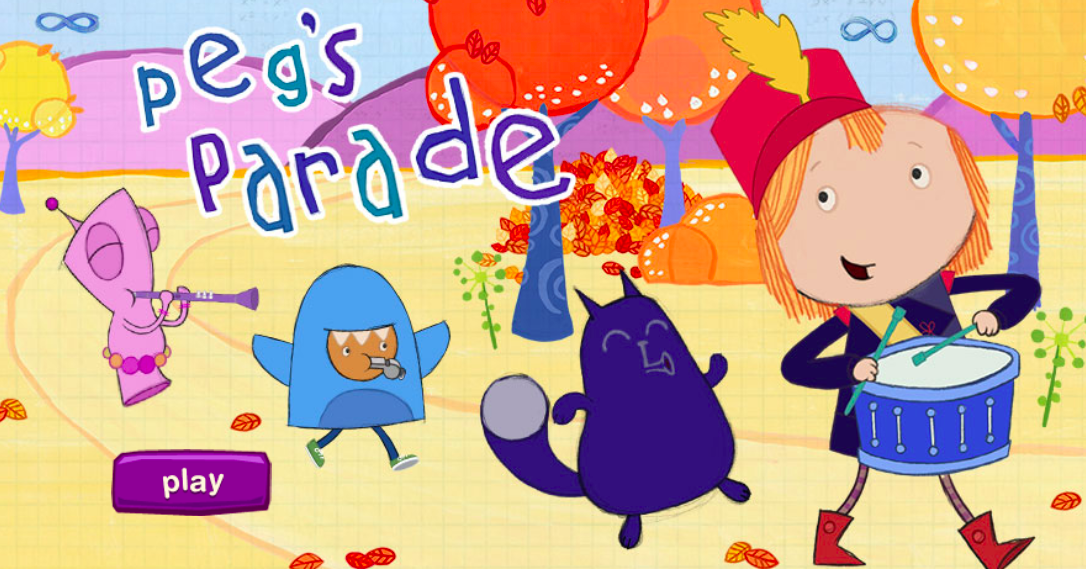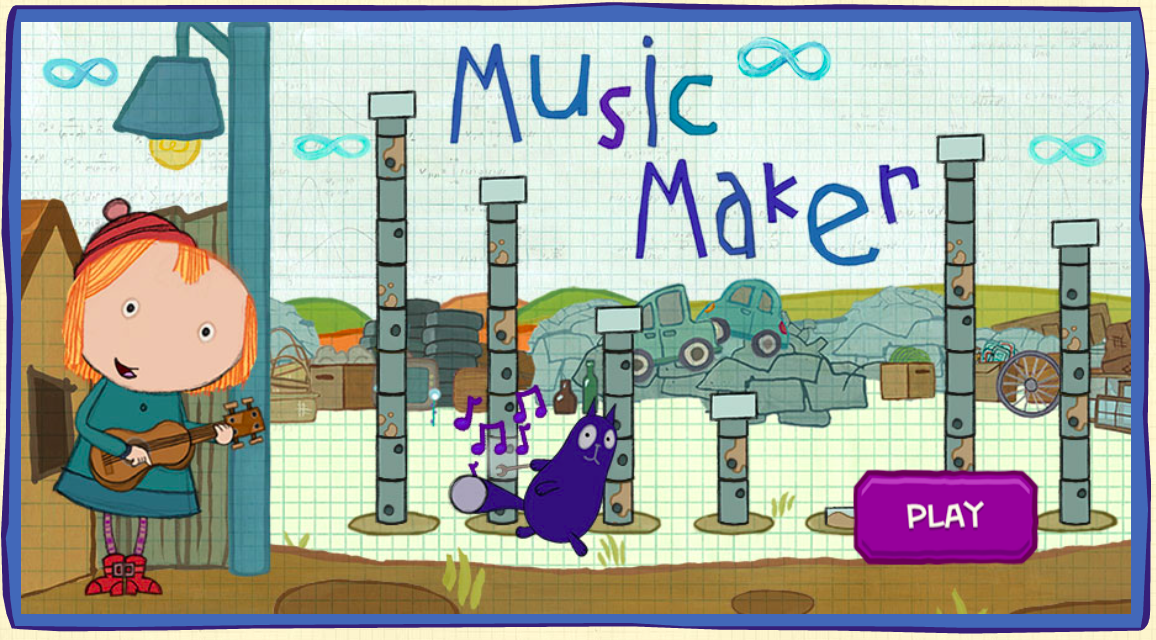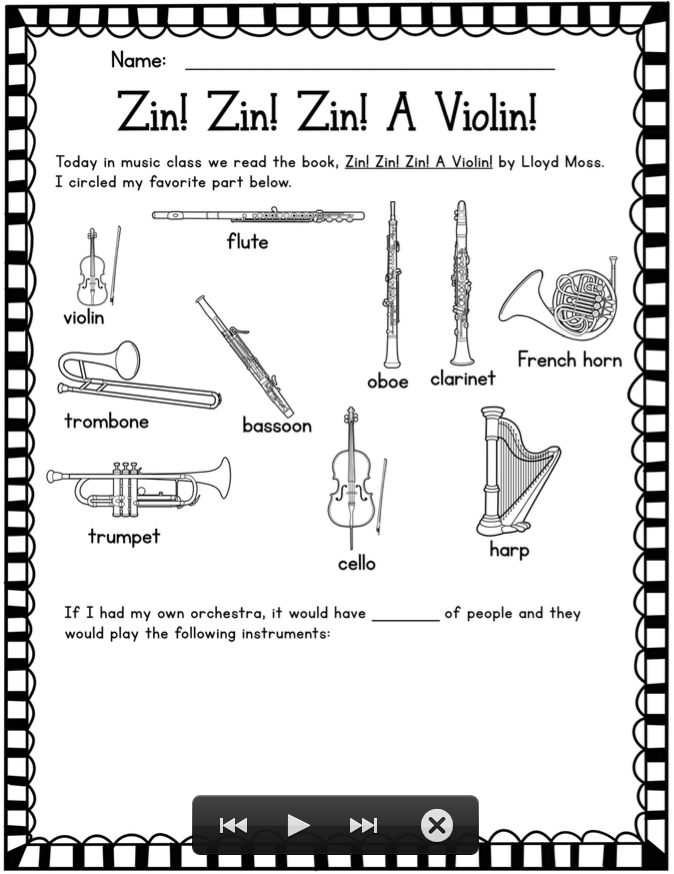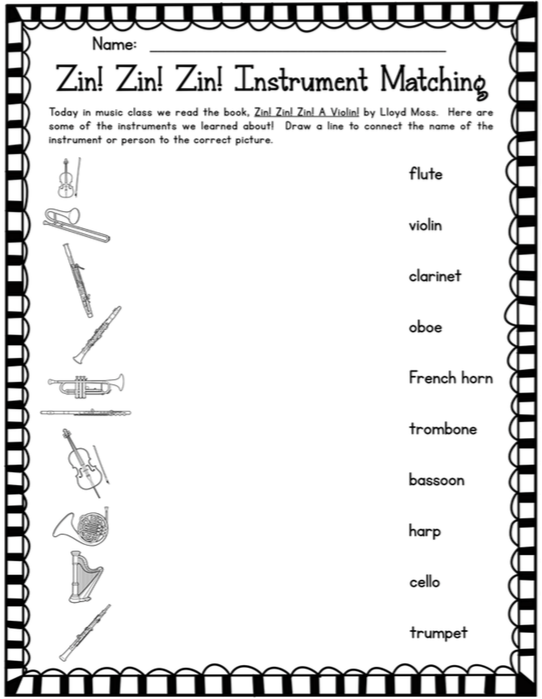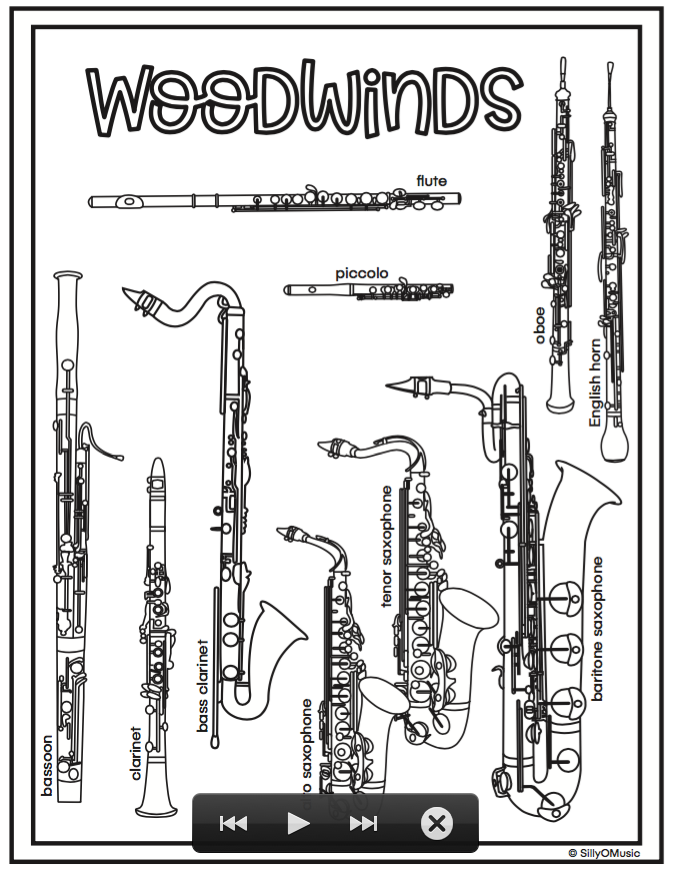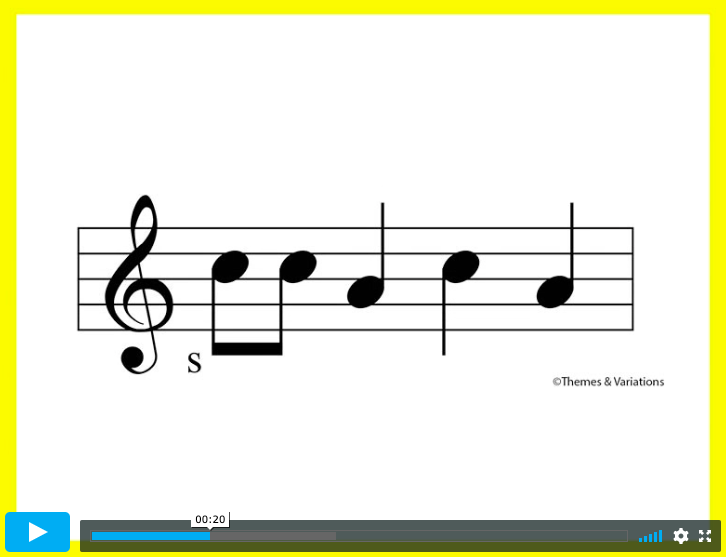Week 13: 6/15-6/19
|
Dear Kindergarteners,
Congratulations! You've made it through 13 weeks of distance learning! I know it hasn't been easy but I'm proud of you. Although our sticker chart is still at school, I know it would definitely be filled up by now. In fact, you've earned more than one super fun music reward! I hope you enjoy these games and activities. Love, Ms. Sheridan PLAY: Have some fun playing these music games from PBS kids featuring Peg and Cat and other friends from this great show! Music Maker Peg's Parade SING: Sing along with some old favorite songs from throughout the school year! DANCE:
Follow along with this dance routine to "Can't Stop the Feeling"! Try and get your family members to jump up and join you! Make a video of your dancing and share it with me at: [email protected] |
|
Week 12: 6/8-6/12
|
READ: You Matter
Christian Robinson is an author and illustrator. I follow him on Instagram and find his series called “Making Space” @theartoffun really engaging, moving and important. My children and I have watched and made art along with him. I highly recommend it! He released a new book a few days ago and it’s message is one that I want all of my students to hear. YOU MATTER! LISTEN & SING: Songs that bring us together There are so many things going on in the world around us right now. Many people are feeling worried, sad, angry or confused. These are all important feelings. Sometimes, these emotions can leave us feeling alone. One thing I know that can always help bring people together is music. Humans sing when they are happy. But, we also sing when we’re sad. Making music has a magical way of helping us share our feelings and find the words we need to express ourselves. It can make us feel united and strong. It has the power to lift us up and make us belong. You and your family may be expressing your feelings at home by making signs of gratitude and cheering on our essential workers helping to fight the pandemic. You may be protesting, marching or attending a vigil to show that you know Black Lives Matter. All of these actions are important tools for changing and strengthening our community. Throughout history, music has been the glue to bind communities together when they are unraveling. Each year at Pierce, we sing to celebrate the life of Martin Luther King Jr. to remind us of our constant fight for civil rights in this country. What we sing, unites us and makes us stronger. I have shared these songs and more in a playlist below. I encourage you to bring these songs into your homes. Listen and SING as a family and lift each other up. |
PLAYLIST: Songs that bring us together
|
|
|
|
|
LEARN:
This week we will finish up our unit on the Orchestra by learning about the Percussion family! Percussion instruments are played by hitting, shaking or being scraped. In the Carnival of the Animals, there are several pieces that feature the xylophone and piano which are members of the percussion family. Fossils: This version is played by 4 marimbas. A marimba is a cousin of the xylophone. Pianists: Watch at the two pianos take turns! Finale: In the finale, every instrument joins in. Keep your ears open for the xylophone. |
|
|
|
|
|
COLOR:
While you are listening to the Percussion family play the theme and variation in the Young Person's Guide to the Orchestra, go ahead and color each percussion instrument in using this worksheet. How many different percussion instruments can you hear?
While you are listening to the Percussion family play the theme and variation in the Young Person's Guide to the Orchestra, go ahead and color each percussion instrument in using this worksheet. How many different percussion instruments can you hear?
Your browser does not support viewing this document. Click here to download the document.
Week 11: 6/1-6/5
|
SING: “I am With You” by Olaf!
Listen to this beautiful new song by everyone's favorite snowman. Sing along with Olaf and think about all the people that you are missing. Call you family and friends and sing this song to them. It's a beautiful way to share how much you are missing them while also brightening their day and spreading joy. LEARN: Brass Family This week we are going to be learning about the Brass family. Many of these instruments may be familiar to you. Brass instruments make a very full and strong sound. But they can also be played softly and smoothly! Watch the introduction to the Brass family from Ms. Han. LISTEN: Flight of the Bumblebee Unfortunately there are no songs from the Carnival of Animals that represent the brass instrument family. So we’re going to add our own animal to the carnival; BEES! I’ve attached a video that you can watch that highlights our brass instruments. Can you find them all? Listen to how fast they play! Can you imagine those bumblebees buzzing? READ: Tubby the Tuba
We're going to hear a story about Tubby the Tuba. The tuba is a brass instrument so this is the perfect time to share one of my favorite music books! Listen carefully for the tuba and the other instruments in the orchestra. How many instruments can you count? |
COLOR:
While you are listening to all of these fun videos about the Brass family, color them in on this worksheet as you go! You do not need to make them their real color. You can color them in any way you like!
Your browser does not support viewing this document. Click here to download the document.
|
Week Ten: 5/26-5/29
|
SING: “We Are Fine Musicians”
Let’s practice our new song again! Once you’ve learned all of the parts that I sing in the video, try adding your own ideas with new instruments! WATCH: Let’s learn about the Woodwind Family. Watch the "Introduction the Woodwind Family" video and try to remember what you already know about woodwind instruments. We have learned about many pieces from the "Carnival of the Animals" by Camille Saint-Seans this year. As we explore the members of the Woodwind family this week, listen to some familiar pieces from the Carnival of the Animals that feature woodwind instruments! Aviary: (strings, piano, and flute) Cuckoo in the Woods: (two pianos and clarinet) Aquarium: (Strings, piano, flute and glockenspiel)
“Zin! Zin! Zin! A Violin!”
Last week you listened to the story “Zin! Zin! Zin! A Violin!” by Lloyd Moses. If you didn't get a chance to listen to it, go ahead and do it this week! This week I’d like you to review what you learned from the story and complete the worksheets below! Once you’ve completed them, have your grown up take a picture and share your work with me at [email protected] Instrument Matching Worksheet Orchestra Worksheet |
COLOR:
Another great way to learn about all the members of the Woodwind family is to color them all in! Print out this coloring sheet for Woodwind family and have fun! I would highly recommend coloring your sheet while you are listening to the pieces listed above! |
Week Nine: 5/18-5/22
|
SING:
This week we will bring back an old favorite from music class! Sing along with this video of our song "Bow Wow Wow" and see if you can remember all the movements! I would love to see you singing and dancing to this song at home. Send me a video at: [email protected] WATCH: We will be learning about the different families of the Orchestra over the next few weeks. This week, we will start with the String Family. Watch the "Introduction the String Family" video by Ms. Han. (I'll be doing next week's video!) We have learned about many pieces from the "Carnival of the Animals" by Camille Saint-Seans this year. As we explore the members of the String Family this week, listen to some familiar pieces from the Carnival of the Animals that feature string instruments!
COLOR:
Another great way to learn about all the members of the String Family is to color them all in! Print out this coloring sheet for String Family and have fun! I would highly recommend coloring your sheet while you are listening to the pieces listed above!
Your browser does not support viewing this document. Click here to download the document.
|
LISTEN:
"Zin! Zin! Zin! A Violin" by Lloyd Moss is a story that introduces many instruments of the orchestra. Listen and watch carefully to see if you can find all the string instruments that we’ve learned about! |
Week Eight: 5/11-5/15
|
WATCH:
An orchestra is a group of musicians who play music together. This week we will be learning about the different families in the Orchestra. In this video, a boy named George gets to visit an orchestra in Sydney, Australia where he lives! After you watch the video, try to answer these questions: -What does a conductor do? -What is the conductors stick called? -What are the four families of the Orchestra? -How many members of each family can you remember? -Do you have a favorite instrument? Next week we will begin to learn more about the Orchestra and how instruments can be used to tell stories! LISTEN: “Jake the Philharmonic Dog” is one of my favorite musical picture books. He is a cute and lucky dog who gets to visit an orchestra with his owner! Listen to me read the story and see how many instruments you meet along the way. SING: Here is a new song about some of my favorite instruments! Listen as I sing and join in each time you hear an instrument plating. Can you make up some of your own verses about instruments you heard and saw in our orchestra visit and read aloud? Send me a video of your new idea and I will share it next week! Email it to me at: [email protected] Oh, we are fine musicians, we practice every day. People come from miles around just to hear us play! My trumpet, my trumpet, they love to hear my trumpet... My trombone, my trombone, they love to hear my trombone... My tuba, my tuba, they love to play my tuba... My piccolo, my piccolo, they love to play my piccolo... MOVE: It’s time to get off the couch and move your body! Grab your family members and follow along. You will practice moving and freezing and following the singing cues. Have fun and don’t be afraid to get silly. |
|
Week Seven: 5/4-5/8
|
SING:
Last week we started to learn the song, Shine, Gentle Sun. This week, Ms. Han and I made a video for you to show what it sounds like when we sing this song as a round. To sing a round, everyone sings the same song, but different voices start at different times. This creates harmony! Try to sing along with me or with Ms. Han. It's tricky! You can also try to sing this round with a family member. You can send me a video of your singing at: [email protected] PRACTICE: This week we’re going to be watching a video that teaches us about how important keeping a beat is! We often practice finding the beat and patting the beat while we sing in music class. This video will show you why that’s important! Try to pat and sing along with the video. MOVE: The best musicians know how to feel and keep a steady beat when they make music. Today we are going to work on that skill using body percussion. Start at the very first slide and be sure to follow the directions. Then go through as many patterns as you can! Remember to keep a steady beat with each pattern and try not get faster as you go. How many slides can you get through? LISTEN & CREATE: Listen to the song "Lava" that I have posted below. As you watch, think about the story that the song is telling. After you are done listening, please print out or copy of this worksheet and fill it out. If you can't print at home, just draw our own worksheet. You can ask your adult for help with reading the directions. If you want to write about how the music makes you feel as well, I would love to see your work! Please send it to me at [email protected] |
Your browser does not support viewing this document. Click here to download the document.
|
Week Six: 4/27-5/1
|
SING:
Begin by warming up your voice and singing Echo Song. All you have to do it echo the words I sing to learn the song. Sing this song once every day if you can and try to teach a family member. Remember when we sang a song about John, the Rabbit in music class? We always hopped on the words, “Yes M’am” and you can do the same at home! You can also begin to learn a new song this week. Shine, Gentle Sun is a perfect song to sing in the spring because the time to plant seeds in your garden is now! Hopefully, you noticed flowers blooming and leaves opening all around you on your “Listening Walk’ last week. Did you complete your worksheet? If so, please email it to me so I can see your work: [email protected] MOVE: Follow the dancers in the video to move to “Aquarium” from the Carnival of the Animals by Camille St. Seans. Watch them carefully and mirror their movements. As you move, imagine you are INSIDE the aquarium, or maybe even planted on the ocean floor, smoothly moving through the water and noticing all the things around you. Are there any exciting animals you see? Any colorful coral or seaweed floating by? Do you see any schools of rainbow fish? Do your moves match the music? CREATE: Do you like secret codes? I do! Use this worksheet of rhythm patterns to play your name or send a message to someone! Spell your name on a piece of paper. Find the rhythm on the chart for each letter of your name and write them down in order. Then, try to say and play the rhythm sentence that spells your name. You can spell all the names in your family too! Record yourself or send me your rhythm sentence so I can see your work: [email protected]
Your browser does not support viewing this document. Click here to download the document.
|
|
Week Five: 4/21-4/24
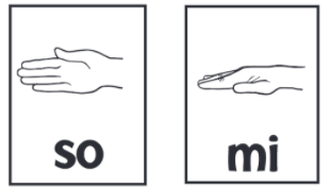
SING:
Start your day by warming up your voice with the whistle warm-up and greeting song. Then try singing a new song called “If You’re Happy and You Know It”. It’s a great way to warm up with singing and also get your body moving! What are some things that make you happy? Can you add your own words to the song? For example, Ms. Sheridan would sing: “If you’re happy and you know it, give a high five!” You all know how much I love high fives! SING & SIGN: Visit this website and practice singing the pitches Sol and Mi. You can start with #1 and go all the way to #3! Listen to the pattern and echo it. Try using your hand signs. I’ve added the pictures for Sol and Mi above to remind you of what they look like. MOVE: Remember when we danced in music class in the parade for Ferdinand the Bull? Today, you are going to listen to a different song and move to it using a scarf too? Show the direction and rhythm of the melody! Click on this link to hear "On the Beautiful Blue Danube, Op. 314" by Johann Strauss. Grab a scarf, watch the video, and try to follow along. Most importantly, have fun!! LISTEN & COLOR: Carnival of the Animals Watch an entire performance of the Carnival of the Animals by Camille St. Saens and choose an animal from the folder that you would like to print and color! I would love to see some pictures of your work! Send it to me at: [email protected] |
|
Week Four: 4/13-4/17
|
SING:
Warm up your voice with me. Sing along with the video here and join in with me and my whistle! There are two new songs for you to listen to and sing at home! They have lots of words so make sure you listen a little each day and try to learn them all. Walking Through the Jungle is an echo song. That means that the singer is the leader, and you can echo his words with your own voice. There’s A Hole in the Bottom of the Sea has one repeating part with the words: “There’s a hole, there’s a hole, there’s a hole in the bottom of the sea”. When you listen to this song, try to tap the steady beat on your lap. The next time you listen, see if you can sing the repeating part every time is happens in the song! LISTEN & WRITE: The Listening Walk is a story about a little girl who goes for a walk with her Dad and her old dog named Major. When they walk, they don’t talk! Instead, they listen deeply to all the sounds around them. Listen to the story and think about all the sounds that they hear as they walk. Now, it’s your turn! You are going to take a listening walk with a grown-up and notice all the sounds you hear. If you can’t go for a walk, try doing this sitting on your front steps, or in your backyard! You won’t need to go far to hear some interesting things.
|
|
Week Three: 4/6-4/10

SING: Start every day with a song! Sing a greeting song from music class to someone in your family!
LISTEN: We will listen to two more songs about two new animals from the Carnival of Animals by Camille St, Saens. The Kangaroo and the Tortoise are very different animals, and the music that was written for them is very different too! MOVE: Kangaroo: Listen to the Kangaroo music. Can you imagine the kangaroo quickly jumping? Jump along with the kangaroo every time you hear it hopping up and down the piano! Does it get faster while it jumps? 
Tortoise: Here is a video of the orchestra performing the Tortoise music. Do you hear how slowly it is moving? Try moving to the music as slowly as you can. Maybe you can crawl like a turtle or do a little turtle dance! Can you count how many instruments are playing?
PLAY: Sesame Street Band This is a fun activity online that let's you make music in a few different ways. Experiment with different instruments and get creative! Sing & Watch: Over in The Meadow You may remember reading this book and hearing this song in music class. Here is a video of someone singing the story for you. Try to follow and sing along! |
|
Week Two: 3/30-4/3
|
SING: Start every day with a song! Sing a greeting song from music class to someone in your family!
LISTEN: Carnival of Animals (Elephant & Lion) MOVE: Elephant: Can you listen to the elephant and step side to side counting 1-2-3? This way of moving is called a waltz. Try to waltz with the elephant as you listen! Listen for the big, low voice of the double bass. Here’s a clip of the double bass playing the elephant for you to dance with. Lion: Listen to the lion roar! He marches so proudly around his animal kingdom. Watch this video of a small orchestra playing the lion! -Can you imagine how he moves to his music? -How many times does he roar? -When you listen to the piano playing the roar, does it start low or does it start high? -Can you move like the lion ROAR each time you hear the lion roar? PLAY: Peg + Cat Music Maker Understanding the difference between High and Low is another key concept for kindergarteners. Play this game on PBS kids and help your child understand the relationship between length and pitch. The longer Cat makes the tubes, the lower they get! It works the same way on the xylophones they play in class. |
|
Week One: 3/23-3/27
|
SING: Ask your child to teach you a greeting song from music class! There are a few they know well enough to teach. “Hello, Hello, How Do You Do?” is a fun song because they pick a different way of moving each time we repeat the greeting. Have them sing “Alligator Pie” or “Acorn Song”.
MOVE: An essential musical concept for kindergarten is Steady Beat. As you listen to music and sing songs around the house, encourage your child to show you the beat, or pulse, by swaying, patting their legs, walking around the house, etc. LISTEN: The Carnival of the Animals by Camille St. Saens You can find this piece of music on whatever platform you listen to music on, or you can watch a video of it through this link above. Have your child listen and imagine the animals of each piece and how they might move like the musicians who are playing. |
|
Proudly powered by Weebly
